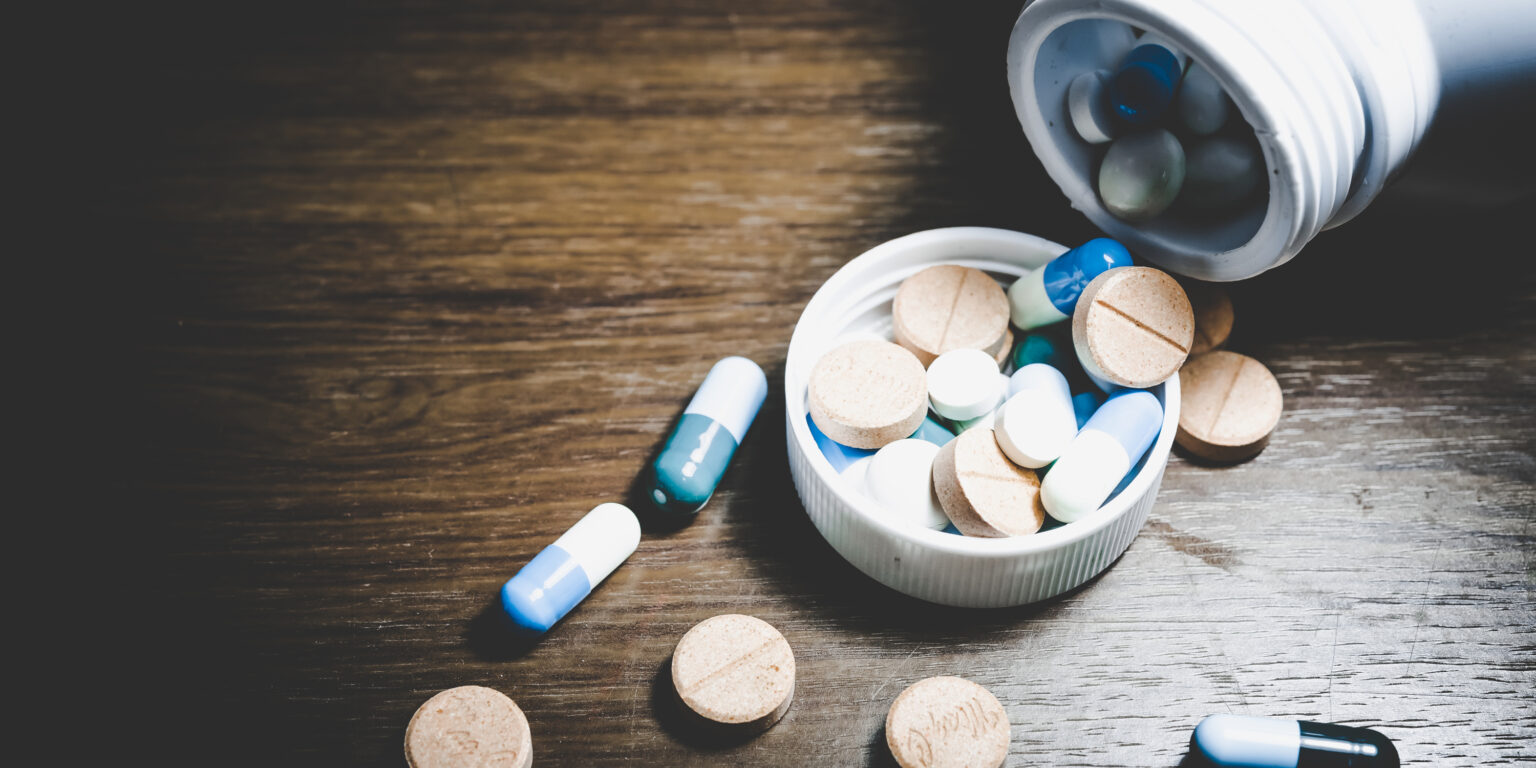Prescription drug misuse is on the rise in the United States, and its prevalence continues to impact communities around the nation. According to the National Institute on Drug Abuse (NIDA), almost 7 million Americans – or 2.7% of the population – abuse prescription drugs. Certain populations, such as youth and older adults, are at particular risk. In fact, misuse of prescription drugs is highest among young adults between the ages of 18 and 25.
There are many reasons for prescription drug misuse, and those reasons vary by age, gender, and other factors. But one factor that likely contributes is simply ease of access. Although a prescription drug is only legally available with a doctor’s prescription, there are plenty of other ways to illegally obtain legal drugs. For example, when asked how they obtained prescription drugs for non-medical use, around 60% of adolescents and young adults said they either bought or received the drugs from a friend or relative.
What types of prescription drugs are most likely to be misused?
A prescription drug is defined as medicine that is available solely on the written orders, or prescription, of a doctor. Some of the most commonly known prescription drugs are Adderall, Ritalin, Vicodin, Oxycontin, Xanax, and Ambien, but there are others that we will cover. In general, most abused prescription drugs fall into one of these three main drug classes: depressants, opioids, and stimulants.
What are depressants?
Substances classified as depressants, a category that includes tranquilizers, sedatives, and hypnotics, reduce arousal and stimulation. They do not necessarily make a person feel depressed. Instead, they slow down the messages between the brain and the body by affecting the central nervous system.
Most depressants work by increasing activity at receptors for the inhibitory neurotransmitter gamma-aminobutyric acid (GABA). This ability to increase GABA signaling — thereby increasing inhibition of brain activity — produces a drowsy or calming effect that is medically beneficial to those suffering from anxiety or sleep disorders.
In general, when low and/or medically appropriate doses of depressants are taken, the following effects may be experienced:
- Reduced inhibitions
- Enhanced mood
- Reduced anxiety
- Slowed reaction time
- Impaired judgment
- Slowed breathing
- Increased risk of accident or injury
Higher and/or medically inappropriate doses can result in:
- Impaired judgment
- Vomiting
- Shallow or irregular breathing
- Blackouts and memory loss
- Unconsciousness
- Coma
- Death
Benzodiazepines, sleep medications, and barbiturates are among the medications most commonly prescribed for these purposes. Depressants can be beneficial when used as prescribed and are often prescribed to help with anxiety, insomnia, depression, panic attacks, post-traumatic stress disorder, muscle spasms, or seizures.
Despite their therapeutic effects, these medicines have the potential for misuse and should be used only as prescribed. If one uses these drugs long-term, he or she may need larger doses to achieve the same effects. Continued use can also lead to dependence and withdrawal when use is abruptly reduced or stopped.
Because depressants work by slowing the brain’s activity, when an individual stops taking them, there can be a rebound effect, resulting in seizures or other harmful consequences. Someone who is thinking about discontinuing the use of a depressant should always speak with a physician before doing so.
Some of the most well-known prescription depressants are Valium, Xanax, ProSom, Ambien, and Sonata.
What are opioids?
Substances classified as opioids include any drug that acts on opioid receptors in the brain, as well as any natural or synthetic drugs derived from or related to the opium poppy. Opioids bind to opioid receptors and depress the central nervous system, slowing down messages traveling between the brain and the body. This slows down breathing and heart rate. Opioid receptors also stimulate the release of dopamine, which leads to sensations of pleasure and pain relief.
If a person’s breathing and heart rate slow down to a certain point, they may stop breathing, and an overdose can occur. Opioid overdose can, and often does, result in death. In fact, over 70% of the nearly 71,000 drug overdose deaths in 2019 involved an opioid.
It is undeniable that millions of Americans suffer from pain, whether acute or chronic and are often prescribed opioids to treat their conditions. However, the dangers of prescription misuse, and specifically opioid abuse and overdose, are a growing problem in the United States.
In general, when low and/or medically appropriate doses of opioids are taken, the following effects may be experienced:
- Extreme relaxation
- Drowsiness and clumsiness
- Confusion
- Slurred speech
- Slowing breathing and heartbeat
Higher and/or medically inappropriate doses can result in:
- Cold, clammy skin
- Slow breathing
- Blue lips and fingertips
- Falling asleep
- Death by respiratory depression
Some of the most well-known prescription opioids are codeine, fentanyl, morphine, hydrocodone, and oxycodone. Generally, opioids can be used in various ways. They can be ingested as tablets and drunk in liquid form. Common brand names include: OxyContin, Oxaydo, Xtampza, Anexsia, Percocet, and Reprexain.
What are stimulants?
Stimulants are a class of drugs that do the opposite of depressants and opioids: they speed up messages traveling between the brain and the body. Stimulants can make a person feel more awake, alert, confident, or energetic.
Some common stimulants are caffeine, nicotine, amphetamines, methamphetamines, and cocaine.
In general, when low and/or medically appropriate doses of stimulants are taken, the following effects may be experienced:
- Euphoria
- Heightened feelings of wellbeing
- Increased heart rate and blood pressure
- Increased alertness
- Talkativeness
- Reduced appetite
Higher and/or medically inappropriate doses can result in:
- Anxiety or tension
- Increased body temperature
- Nausea
- Tremors and seizures
- Coma
- Death
Some of the most common prescription stimulants are Adderall, Dexedrine, Ritalin, Vyvanse, and Desoxyn. Generally, prescribed stimulants are taken orally, though they can also be snorted, and the duration of their effects depends on the type of medication and method of ingestion.
Prescription Drug Use Statistics
Misuse of prescription depressants, opioids, and stimulants is a serious public health problem in the United States. More people die each day from overdosing on powerful prescription painkillers (opioids) than from road accidents and firearm deaths combined.
Although most people take prescription medications responsibly, in 2017, an estimated 18 million people misused such medications at least once in the past year. According to the 2017 National Survey on Drug Use and Health, an estimated 2 million Americans misused prescription painkillers for the first time within that calendar year. Additionally, more than one million misused prescription stimulants, 1.5 million misused tranquilizers, and 271,000 misused sedatives for the first time.
The consequences of prescription drug misuse continue to impact communities across the United States. In 2019, nearly 71,000 people died from drug overdoses, making it a leading cause of injury-related death. Of those deaths, 70% involved a prescription or illicit opioid. Drug overdose deaths continue to increase in the United States.
And while the reasons for the high prevalence of prescription drug misuse vary by age, gender, and other factors, it is undeniable that certain populations, such as youth and older adults, are at particular risk.
According to the National Center for Drug Abuse Statistics, the number of 8th-graders who used drugs increased 61% from 2016 to 2020. And according to the National Survey on Drug Use and Health (NSDUH) data on young adults and their drug usage, in 2014, more than 5,700 youth reported using prescription pain relievers without a doctor’s guidance for the first time. As use among teens and young adults grows, it’s more important than ever to know what to do when someone you love is abusing drugs and where to go for help.
Prevention efforts
One of the best ways to prevent an addiction to a drug is to not take the drug at all. If your doctor prescribes a drug with a high potential for addiction, use care when taking the drug and follow the instructions provided by your doctor. Doctors should prescribe these medications at safe doses and monitor their use so that you’re not given too large a dose or prescribed the drug for too long a time. If you feel uncomfortable using the medication, talk to your doctor about alternatives.
There are many other ways to help prevent drug misuse in your family or among your friends. Some of the most common methods of prevention are:
- Communicate. Talk to those you love about the risks of drug use and misuse.
- Listen. Be a good listener when those you love talk about difficult topics such as peer pressure, and be supportive of their efforts to resist it.
- Set a good example. If you don’t want the people you love to begin misusing drugs, be a good model. Don’t misuse alcohol or any addictive drugs, prescription or illicit.
- Strengthen your bond. Work on your relationship with those you love. A strong, stable, supportive bond between you and those you love will reduce their risk of using or misusing drugs.
Intervention efforts
Physicians, patients, and pharmacists can all play a role in identifying and intervening in illicit use of prescription drugs. There are many things that they can do. For example, more than 84% of Americans had contact with a healthcare professional in 2016. By asking about drug usage, physicians can help their patients recognize whether a problem exists, provide appropriate treatment, and set recovery goals.
Drug use disorder treatment generally belongs to one of two categories: behavioral treatments (such as contingency management and cognitive-behavioral therapy) and medications. Behavioral treatments help patients stop drug use by changing unhealthy patterns of thinking and behavior, teaching strategies to manage cravings and avoid situations that might lead to relapse, and, in some cases, providing incentives for abstinence.
Some medications exist which can be used to treat drug addiction to specific substances. For instance, addiction to prescription opioids can be treated with medications including buprenorphine, methadone, and naltrexone. These drugs can prevent other opioids from affecting the brain or relieve withdrawal symptoms and cravings. This can, in turn, help the patient avoid relapse.
Often drug misuse occurs in conjunction with the use of other drugs, such as alcohol or opioids. In such cases, the treatment should address the multiple addictions.
Course Highlight: Other Drugs
Other Drugs is a comprehensive course offered by 3rd Millennium Classrooms, designed specifically for individuals with current or past experiences with illicit drugs and/or prescription drug misuse. It can be used as an intervention resource for those who have a prescription or illicit drug violation, or as a preventative measure, especially for younger populations who may be facing peer pressure to start abusing drugs.
An effective prevention or intervention tool, Other Drugs focuses on the effects, risks, and consequences of drug misuse, with an emphasis on prescription drug misuse involving depressants, opiates, stimulants, and hallucinogens. The course highlights the impact of drug misuse in a motivational interviewing style. Other Drugs is designed to help individuals recognize and reflect upon their beliefs, attitudes, and behaviors – and their influence on an individual’s decision to use or misuse drugs.
An online, on-demand program, Other Drugs provides personalized feedback throughout the duration of the course as well as a confidential summary report upon course completion. In a counseling or coaching setting, this report can be used as a conversation starter to ignite discussion around the topic of drug misuse. Other Drugs is a completely confidential resource that can be paired with other courses for offenders who may have multiple violations.




